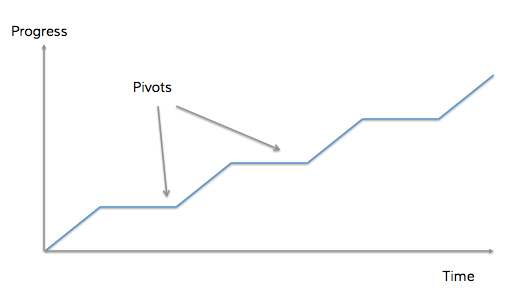Tips for allowing creativity to surface during the challenges of startup life
Recently I was discussing a potential pivot for a founder’s company and we got on the topic of failure. Yes it is true that many startups fail. The biggest reasons are attributed to not achieving product-market fit and the next can be bundled into execution problems. The startup world is full of people who have failed.
Those that go through the rollercoaster ride of a startup and the necessary pivots will likely have gone through many failures before a success breakthrough occurs. It’s part of the process.
What do you do when you hit walls in your company progression, product idea or growth goals? We’ve all been there. Here are some tips for moving forward and turning failure on its head.
Don’t Fear The Reaper
In the US we talk about failure as a common part of startup life, while startups in other countries often think of failure as a taboo topic. In Africa’s emerging startup communities, failure carries a heavy stigma. Failure doesn’t make you stronger; failure makes you a failure. While we know this simply isn’t true and many are working hard to turn this sentiment around, there is fear of failure in nearly every society.
We all know failure happens to everyone; it’s how we respond to it that matters most. In the face of failure, do you look at things head on and acknowledge what isn’t working? After all, the quicker you do the faster a resolution will appear.
In startup communities around the US, we adopt a “fail fast” approach and have gone so far as to weave that into our product development efforts. We acknowledge that founding a company and working on our product idea puts a lot on the line, and we know that iterating (we refer to these as “pivots” or “little failures”) is a necessary part of the process.
If you build in some repeatable process for how to deal with moments that require a shift, those shifts won’t feel as scary. Embrace the possibility of failure and get started.
Develop A Plan
Developing products from the ground up can be overwhelming; the most common questions surface repeatedly: “How do I start? What will this cost? Can I do this alone?” The way we describe this discovery process is like a series of stepping stones, each high value and requiring a small amount of resources to guide the way.
When you get to the place where you understand the sequence of activities to follow, key milestones to achieve, what you will be testing and validating, and what resources you need to get there, you realize you have your foundation.
Often times the biggest hurdle is getting started and the failure to act can feel like constant nagging. The founders we work with often say developing a plan was a centering exercise, and validation of why they got started in the first place. Now that you have some foundation, you have to go build your house.
Enlist A Team
Every founder goes through highs and lows during the building, launching and evolution of his product or service. Momentum is what is needed to keep moving forward but momentum alone is not enough.
To discover and interpret your pivot points, you need a team. Internal team members, an external firm, or a founder focused community can all become part of your house building process. You may have a team to help with framing, a team to add the walls and stucco, and yet another to install the interiors of the rooms.
When “little failures” occur during the product development process, it’s the team that helps repoint direction.
Follow The Signs
Whether you are a startup founder who recently developed her MVP, or a scaleup figuring out the next set of platform features, you need to constantly watch for signals alerting for a need to shift. When signals repeat enough they become signs.
There is an art to the process of discovering when to pivot. It’s recognition that the current pursuit is misguided; a willingness to shift and the ability to spend resources testing and validating your new pursuit is all that is needed to get going on that linear path again.
Assuming you have the right team in place, you select pivots at the right time and with the right intention in order to keep moving forward. All the while you retain a tight focus on why you’re doing this while staying fully informed by the bigger picture.
Failure breeds creativity because it pushes you to redesign your situations until they work.
Take this example of value-creating pivots by Alice Bentinck of Entrepreneur First. This concept is not new but a great reminder of how to pivot properly.

Are there other ways this can go? Absolutely. But if you understand how to do this work you will more than likely achieve value-creating pivots leading to a success point.
Summary
Keep in mind that 42% of startups fail because of a lack of market demand. The ones that are ultimately successful create a foundation that embraces failure for the sake of surfacing new and innovative ideas. They are the ones that enlist teams who understand how to do this work and help you stay lean throughout the process.
Let your failures become your proudest moments and “dare to fail” as many successful organizations do. When daring to fail is part of your culture, you pave the way to success.

